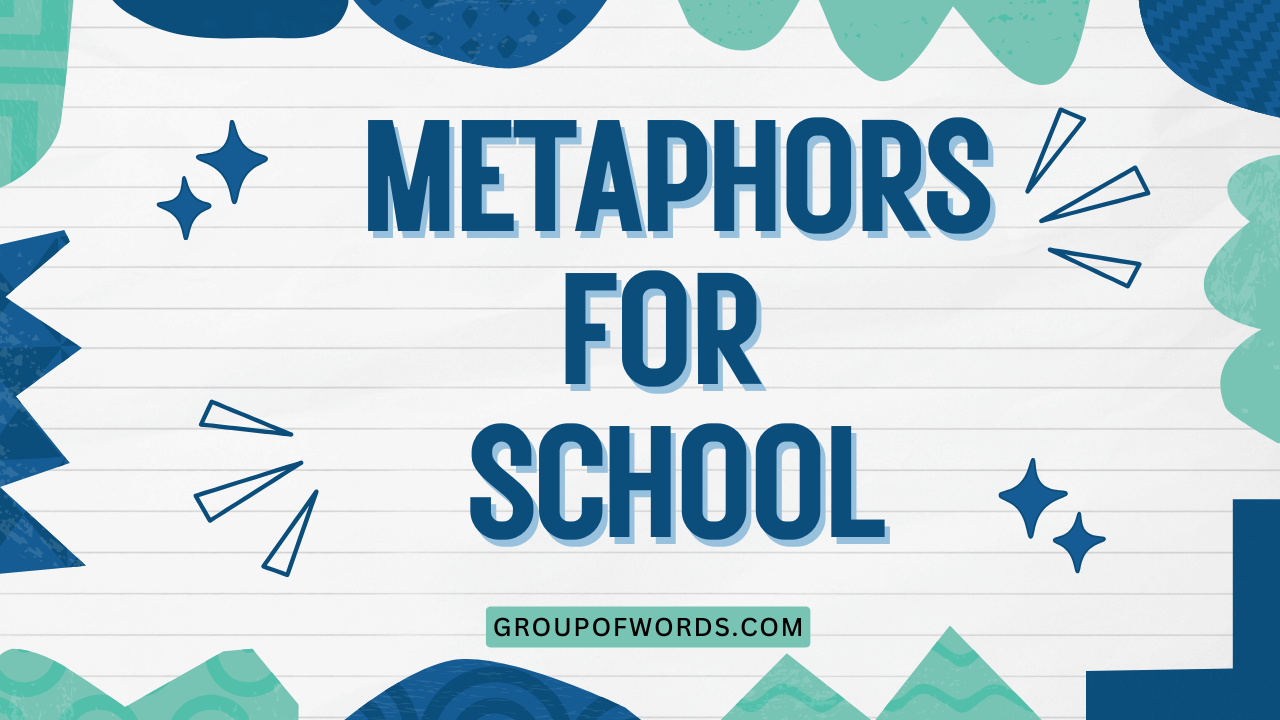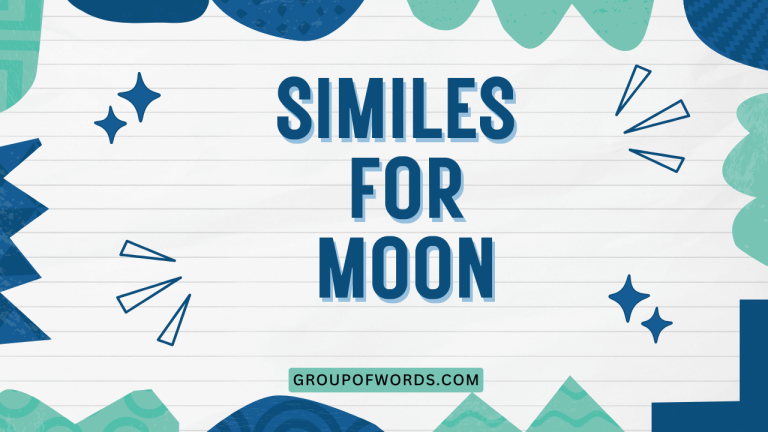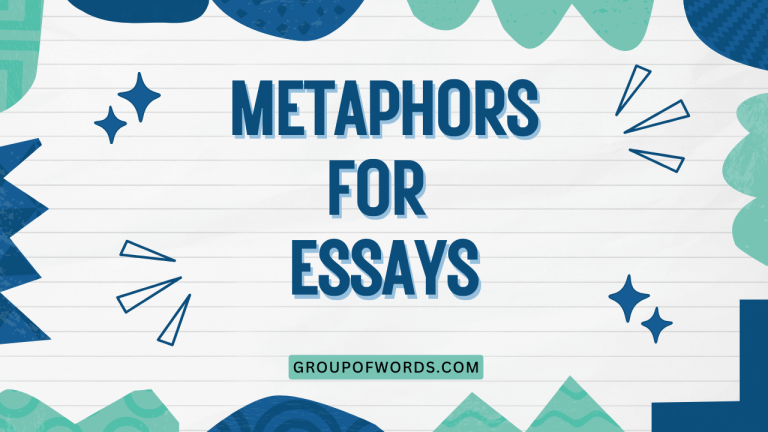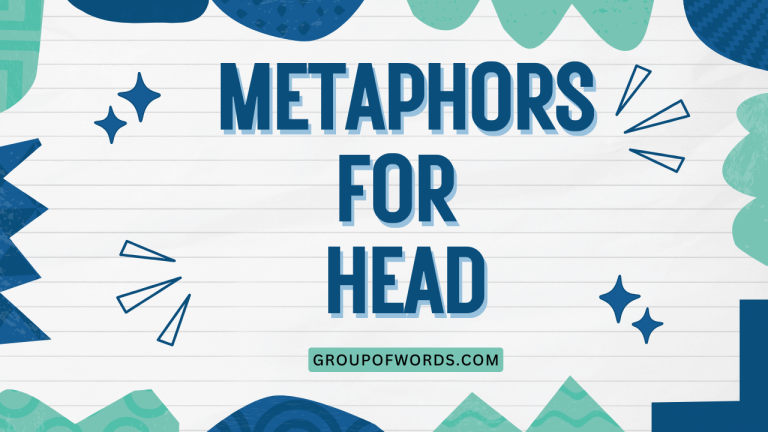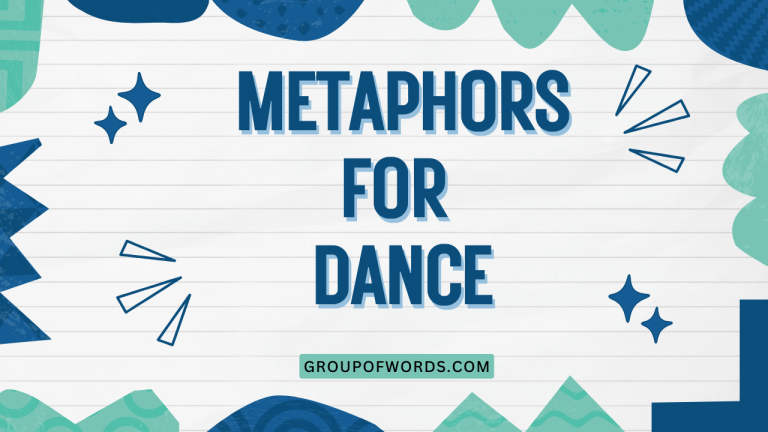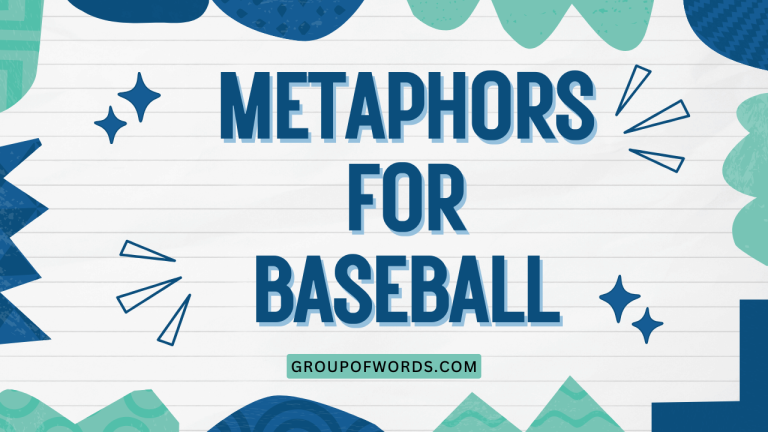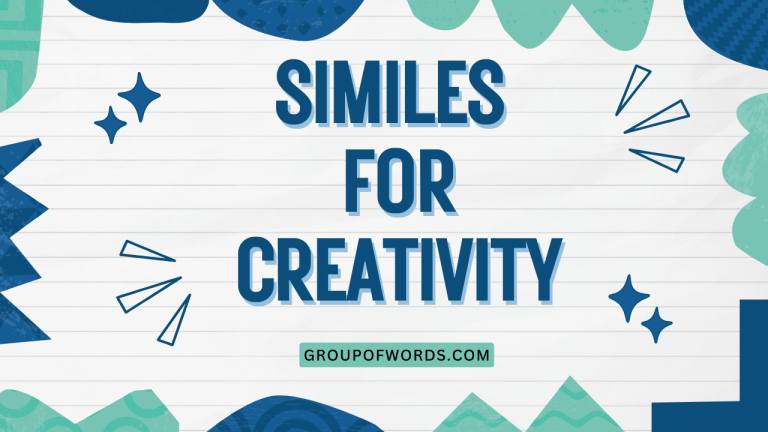School as a Metaphor: Unveiling Deeper Meanings in Education
Metaphors are powerful tools that allow us to understand complex concepts by relating them to something familiar. When we use metaphors to describe school, we gain a richer understanding of its purpose, challenges, and impact.
This article delves into the world of metaphors for school, exploring how they shape our perceptions and experiences of education. Whether you’re a student, teacher, parent, or simply someone interested in language and learning, this guide will provide valuable insights into the metaphorical landscape of schooling.
Understanding these metaphors can help educators refine their approaches, students to better navigate their academic journeys, and parents to support their children more effectively. By recognizing the underlying metaphors, we can foster a more nuanced and meaningful understanding of the educational process.
Table of Contents
- Definition of Metaphor and Its Role in Describing School
- Structural Breakdown of School Metaphors
- Types and Categories of School Metaphors
- Examples of School Metaphors
- Usage Rules for School Metaphors
- Common Mistakes When Using School Metaphors
- Practice Exercises
- Advanced Topics in School Metaphors
- FAQ: Frequently Asked Questions About School Metaphors
- Conclusion
Definition of Metaphor and Its Role in Describing School
A metaphor is a figure of speech that directly compares two unrelated things without using “like” or “as.” It asserts that one thing *is* another, creating a vivid and often insightful connection. Metaphors are fundamental to how we understand the world, allowing us to grasp abstract concepts by relating them to something more concrete and familiar. The use of metaphors in describing school is particularly powerful because it allows us to frame the educational experience in different lights, revealing its multifaceted nature.
In the context of school, metaphors can shape our perceptions of the learning environment, the roles of teachers and students, and the overall purpose of education. For example, if we view school as a “factory,” we might emphasize efficiency and standardization.
Conversely, if we see it as a “garden,” we might prioritize nurturing individual growth and creativity. The choice of metaphor influences how we approach education and what we expect to achieve.
Metaphors are not merely decorative language; they actively construct our understanding of reality. By analyzing the metaphors used to describe school, we can uncover hidden assumptions, challenge conventional wisdom, and ultimately create a more effective and meaningful educational experience for all.
Structural Breakdown of School Metaphors
Understanding the structure of metaphors helps us to analyze their meaning and impact more effectively. A typical metaphor consists of two main elements: the tenor and the vehicle. The tenor is the subject being described (in this case, school), and the vehicle is the concept used to describe it (e.g., a journey, a battlefield, a factory).
The relationship between the tenor and the vehicle is crucial. The metaphor works by transferring qualities or characteristics from the vehicle to the tenor.
For example, when we say “school is a journey,” we are transferring the characteristics of a journey (such as progress, challenges, and destinations) to the concept of school. This highlights the idea that education is a process of growth and development with specific goals in mind.
Furthermore, effective metaphors often rely on shared cultural understandings and associations. The effectiveness of a metaphor depends on the audience’s familiarity with the vehicle and their ability to recognize the relevant connections to the tenor.
If the vehicle is obscure or unfamiliar, the metaphor may fall flat. Consider the metaphor “School is a dance.” This works well because most people have an understanding of what a dance is: movement, rhythm, coordination, and sometimes improvisation.
These aspects can be related to the learning process where students and teachers work together, following established rules, and sometimes improvising to achieve a learning objective.
Types and Categories of School Metaphors
School metaphors can be broadly categorized based on the core concept they use to frame the educational experience. Here are some common categories:
School as a Journey
This metaphor emphasizes the idea that education is a process of growth, exploration, and discovery. It highlights the importance of progress, challenges, and the pursuit of knowledge.
This metaphor suggests that learning is a continuous process with milestones and destinations. Teachers are often seen as guides or mentors, helping students navigate the path of knowledge.
Examples of this metaphor include phrases like “embarking on a new semester,” “navigating the curriculum,” or “reaching graduation.” The journey metaphor often emphasizes the importance of perseverance, resilience, and the rewards of achieving educational goals.
School as a Battlefield
This metaphor portrays education as a competitive and challenging environment where students must struggle to succeed. It emphasizes the pressure to perform, the competition for grades, and the need to overcome obstacles.
This metaphor can be both motivating and demotivating, depending on the individual’s perspective.
Examples include phrases like “fighting for good grades,” “battling procrastination,” or “conquering difficult subjects.” The battlefield metaphor often highlights the importance of hard work, determination, and strategic thinking in achieving academic success.
School as a Factory
This metaphor views education as a process of mass production, where students are standardized and molded to fit specific roles in society. It emphasizes efficiency, conformity, and the transmission of knowledge.
This metaphor is often criticized for its dehumanizing effects and its failure to recognize individual differences.
Examples include phrases like “churning out graduates,” “assembly-line education,” or “producing skilled workers.” The factory metaphor often reflects a focus on standardized testing, curriculum uniformity, and the preparation of students for the workforce.
School as a Garden
This metaphor portrays education as a nurturing and organic process, where students are cultivated and allowed to grow at their own pace. It emphasizes individual differences, creativity, and the development of potential.
This metaphor highlights the importance of a supportive and stimulating learning environment.
Examples include phrases like “cultivating young minds,” “nurturing potential,” or “planting the seeds of knowledge.” The garden metaphor often reflects a focus on personalized learning, student-centered instruction, and the development of lifelong learners.
School as a Game
This metaphor frames education as an engaging and interactive activity with rules, challenges, and rewards. It emphasizes the importance of participation, collaboration, and problem-solving.
This metaphor can make learning more enjoyable and motivating for students.
Examples include phrases like “playing the academic game,” “leveling up in knowledge,” or “winning the scholarship.” The game metaphor often reflects a focus on active learning, gamification of education, and the development of critical thinking skills.
School as a Prison
This metaphor presents school as a place of confinement and restriction, where students are forced to conform and obey. It emphasizes the lack of freedom, the boredom, and the feeling of being trapped.
This metaphor often reflects negative experiences with education and a desire for more autonomy.
Examples include phrases like “serving time in school,” “locked in the classroom,” or “breaking free from the curriculum.” The prison metaphor often highlights issues such as lack of student voice, rigid curriculum, and a focus on discipline over learning.
Examples of School Metaphors
The following tables provide a variety of examples of school metaphors, categorized by the core concept they represent. These examples demonstrate the diverse ways in which we can use metaphors to understand and describe the educational experience.
Table 1: School as a Journey – Examples
This table illustrates various metaphors that depict school as a journey, emphasizing the process of learning and growth.
| Metaphor | Explanation |
|---|---|
| “Education is a long and winding road.” | Learning involves twists, turns, and unexpected challenges. |
| “The school year is a marathon, not a sprint.” | Success requires endurance and consistent effort. |
| “Each lesson is a step on the path to knowledge.” | Learning is incremental, with each step building upon the previous one. |
| “Graduation is the destination of a long journey.” | Graduation represents the culmination of years of hard work and dedication. |
| “The teacher is a guide leading students through the wilderness of information.” | Teachers help students navigate complex topics and find their way. |
| “College is a launching pad for a student’s career.” | Higher education propels students into their professional lives. |
| “Learning a new language is like climbing a mountain.” | Acquiring new skills requires effort, perseverance, and a sense of accomplishment. |
| “The curriculum is a map guiding students through different subjects.” | The curriculum provides a structured path for learning. |
| “Each assignment is a milestone on the road to success.” | Completing assignments marks progress and achievement. |
| “The school is a vessel carrying students towards their future.” | Schools provide the means for students to reach their potential. |
| “Education is an expedition into the unknown.” | Learning involves exploring new ideas and perspectives. |
| “The classroom is a vehicle for intellectual exploration.” | The classroom provides a space for students to investigate and learn. |
| “The teacher is the navigator of the ship of knowledge.” | The teacher guides students through the complexities of learning. |
| “Tests are checkpoints along the educational route.” | Tests assess understanding and mark progress. |
| “The school journey is a quest for wisdom.” | Education is a pursuit of knowledge and understanding. |
| “The library is a treasure trove for knowledge seekers.” | The library provides a wealth of resources for learning. |
| “Each book is a portal to a new world.” | Reading expands horizons and opens up new possibilities. |
| “The school bell is a call to adventure.” | The bell signals the start of a new learning experience. |
| “The diploma is the ticket to a brighter future.” | A diploma represents achievement and opens doors to opportunities. |
| “Education is a voyage of self-discovery.” | Learning helps students understand themselves and their potential. |
| “The teacher is a lighthouse guiding students away from the rocks of ignorance.” | Teachers help students avoid common pitfalls and misconceptions. |
| “The school year is a path filled with challenges and rewards.” | Education involves overcoming obstacles and experiencing successes. |
| “Learning is a continuous ascent to higher levels of understanding.” | Education is a process of gradual improvement and growth. |
Table 2: School as a Battlefield – Examples
This table presents metaphors that portray school as a competitive and challenging environment, where students strive for success.
| Metaphor | Explanation |
|---|---|
| “School is a battleground where students fight for grades.” | Academic success is seen as a competition. |
| “The test was a war of attrition.” | The test was long, difficult, and exhausting. |
| “The teacher is a drill sergeant preparing students for the academic arena.” | Teachers prepare students for the challenges of education. |
| “Students are warriors battling ignorance.” | Learning is seen as a struggle against a lack of knowledge. |
| “The classroom is a competitive arena.” | Success in the classroom requires effort and determination. |
| “Procrastination is the enemy of academic success.” | Putting off work hinders progress and achievement. |
| “The exam was a trial by fire.” | The exam was a difficult and stressful test of knowledge. |
| “Students are soldiers fighting for their future.” | Education is seen as a means of securing a better future. |
| “The library is an arsenal of knowledge.” | The library provides the resources needed to succeed academically. |
| “Each assignment is a skirmish in the academic war.” | Completing assignments is seen as a small victory. |
| “The teacher is a commander strategizing for student success.” | Teachers develop plans to help students achieve their goals. |
| “Students are gladiators competing for academic glory.” | Academic success is seen as a form of recognition and achievement. |
| “The school year is an obstacle course.” | Education involves overcoming challenges and hurdles. |
| “Tests are battles to prove one’s knowledge.” | Tests are seen as a way to demonstrate understanding. |
| “The diploma is the trophy for academic achievement.” | A diploma represents victory in the academic arena. |
| “Education is a campaign for a better future.” | Learning is a strategic effort to improve one’s prospects. |
| “The classroom is a training ground for future leaders.” | Schools prepare students to take on leadership roles. |
| “The teacher is a coach preparing students for the academic game.” | Teachers provide guidance and support to help students succeed. |
| “Students are athletes competing for academic awards.” | Academic achievement is seen as a form of recognition. |
| “The school is a boot camp for life.” | Schools prepare students for the challenges of the real world. |
| “Each grade is a point scored in the game of education.” | Grades represent achievement and progress. |
| “The teacher is an ally in the student’s fight for knowledge.” | Teachers support students in their pursuit of learning. |
| “The textbook is a weapon in the fight against ignorance.” | Textbooks provide the information needed to overcome challenges. |
Table 3: School as a Garden – Examples
The following table showcases metaphors that illustrate school as a garden, emphasizing growth, nurturing, and individual development.
| Metaphor | Explanation |
|---|---|
| “School is a garden where young minds are cultivated.” | Education involves nurturing and developing potential. |
| “Teachers are gardeners tending to their students.” | Teachers provide care, support, and guidance. |
| “The curriculum is fertile ground for new ideas.” | The curriculum provides a foundation for learning and growth. |
| “Students are seeds that need nurturing to blossom.” | Students require care and support to reach their potential. |
| “The classroom is a greenhouse where ideas can flourish.” | The classroom provides a safe and stimulating environment for learning. |
| “Knowledge is the water that nourishes the mind.” | Learning provides sustenance and growth for the intellect. |
| “The teacher is a sun providing warmth and light to students.” | Teachers offer encouragement and guidance to help students succeed. |
| “Students are flowers blooming in the garden of knowledge.” | Learning allows students to grow and develop their unique talents. |
| “The school environment is a ecosystem for learning.” | Schools foster a community where students and teachers can thrive. |
| “The curriculum is a compost of knowledge.” | The curriculum is a collection of resources that supports learning. |
| “Teachers are cultivators of young talent.” | Teachers help students develop their skills and abilities. |
| “Students are plants growing towards the light of knowledge.” | Learning is a process of growth and development. |
| “The school is a nurturing environment for personal growth.” | Schools provide a supportive space for students to develop. |
| “The classroom is a space for cultivating creativity.” | The classroom encourages innovation and exploration. |
| “Education is the fertilizer that enriches the mind.” | Learning enhances intellectual capacity and understanding. |
| “The teacher is a mentor guiding students to grow.” | Teachers provide support and guidance to help students develop. |
| “Students are saplings growing into strong trees.” | Learning helps students develop resilience and strength. |
| “The school year is a season of growth and learning.” | Education is a cyclical process of development. |
| “Tests are opportunities to measure growth.” | Tests assess progress and understanding. |
| “The diploma is the harvest of years of cultivation.” | A diploma represents the culmination of hard work and learning. |
| “Education is the sunshine that brightens the future.” | Learning enhances prospects and opportunities. |
| “The teacher is a caretaker nurturing students’ potential.” | Teachers support and encourage students to reach their goals. |
| “Students are blossoms unfolding their unique talents.” | Learning allows students to express their individuality and creativity. |
Table 4: School as a Factory – Examples
This table provides examples of metaphors that depict school as a factory, emphasizing standardization, mass production, and efficiency.
| Metaphor | Explanation |
|---|---|
| “School is a factory churning out graduates.” | Education is seen as a process of mass production. |
| “Teachers are workers on the assembly line of education.” | Teachers perform specific tasks in the educational process. |
| “The curriculum is a blueprint for standardized products.” | The curriculum aims to produce uniform outcomes. |
| “Students are raw materials being processed in the educational system.” | Students are seen as inputs that are transformed by the school. |
| “The classroom is a manufacturing plant for knowledge.” | Knowledge is produced in a structured and efficient manner. |
| “Tests are quality control checks to ensure uniformity.” | Tests measure adherence to standards. |
| “The school is a production line for future employees.” | Education prepares students for specific roles in the workforce. |
| “Students are products being molded to fit societal needs.” | Education shapes students to meet the demands of society. |
| “The library is a warehouse of information.” | The library stores and distributes knowledge in a systematic way. |
| “Each assignment is a component in the production process.” | Assignments contribute to the overall goal of standardization. |
| “The teacher is a supervisor overseeing the production of knowledge.” | Teachers manage the learning process to ensure efficiency. |
| “Students are widgets being manufactured to meet specifications.” | Education aims to create uniform and predictable outcomes. |
| “The school year is a production cycle with specific targets.” | Education is organized around achieving measurable goals. |
| “Tests are inspections to ensure product quality.” | Tests assess whether students meet required standards. |
| “The diploma is a certificate of conformity to standards.” | A diploma represents adherence to educational norms. |
| “Education is a process of mass customization for the workforce.” | Learning prepares students for specific roles in the economy. |
| “The classroom is a controlled environment for knowledge production.” | Schools maintain order and efficiency in the learning process. |
| “The teacher is a technician operating the machinery of education.” | Teachers use specific methods and tools to deliver instruction. |
| “Students are resources being processed for societal use.” | Education prepares students to contribute to society. |
| “The school is a processing plant for human capital.” | Schools develop skills and knowledge to enhance economic productivity. |
| “Each grade is a metric of production efficiency.” | Grades measure the effectiveness of the learning process. |
| “The teacher is a quality control inspector ensuring standards are met.” | Teachers assess student performance to maintain uniformity. |
| “The textbook is a manual for standardized production.” | Textbooks provide the guidelines for learning. |
Usage Rules for School Metaphors
When using metaphors to describe school, it’s important to follow certain guidelines to ensure clarity and effectiveness. Here are some key rules:
- Choose appropriate vehicles: Select vehicles that are familiar and relevant to your audience. The connection between the tenor and the vehicle should be clear and easy to understand.
- Maintain consistency: Avoid mixing metaphors or shifting between different metaphors without a clear purpose. Inconsistent metaphors can confuse your audience and weaken your message.
- Consider the context: Be mindful of the context in which you are using the metaphor. A metaphor that works well in one situation may be inappropriate in another.
- Avoid clichés: Steer clear of overused or predictable metaphors. Aim for creativity and originality to make your message more impactful.
- Be aware of connotations: Recognize the potential connotations of the vehicle you are using. Some vehicles may have negative or unintended associations that could undermine your message.
For example, while “school as a journey” can be inspiring, “school as a prison” might be more suitable when discussing the limitations and constraints of the educational system. Understanding the nuances of each metaphor allows for more effective communication.
Common Mistakes When Using School Metaphors
Even experienced writers and speakers can make mistakes when using metaphors. Here are some common errors to avoid:
- Mixed metaphors: Combining two or more incompatible metaphors.
- Incorrect: “The school year is a marathon, but we need to nip it in the bud.” (Combines “marathon” and “nip it in the bud,” which are inconsistent.)
- Correct: “The school year is a marathon requiring consistent effort and endurance.”
- Dead metaphors: Using metaphors that have become so common that they have lost their impact.
- Incorrect: “The school is a building block for the future.” (This metaphor is overused and lacks originality.)
- Correct: “The school is a forge shaping the metal of young minds.” (This metaphor is more vivid and engaging.)
- Inappropriate metaphors: Using metaphors that are not suitable for the context or audience.
- Incorrect: “School is a walk in the park.” (This metaphor is inappropriate when describing the challenges and difficulties of education.)
- Correct: “School is a challenging climb up a steep hill.” (This metaphor is more accurate and reflective of the effort required.)
By being aware of these common mistakes, you can use metaphors more effectively and avoid confusing or misleading your audience. Always strive for clarity, consistency, and originality in your metaphorical language.
Practice Exercises
Test your understanding of school metaphors with these exercises.
Exercise 1: Identifying Metaphors
Identify the metaphor in each sentence and explain its meaning.
| Question | Answer |
|---|---|
| 1. The teacher planted the seeds of knowledge in the students’ minds. | Metaphor: “planted the seeds of knowledge.” Meaning: The teacher introduced new ideas and information to the students. |
| 2. School is a training ground for the future. | Metaphor: “training ground.” Meaning: School prepares students for the challenges and opportunities of life. |
| 3. The test was a hurdle that students had to overcome. | Metaphor: “hurdle.” Meaning: The test was a difficult challenge that students needed to pass. |
| 4. The library is a treasure trove of information. | Metaphor: “treasure trove.” Meaning: The library contains a wealth of valuable resources. |
| 5. The diploma is a key that opens doors to new opportunities. | Metaphor: “key.” Meaning: The diploma provides access to future possibilities. |
| 6. The classroom is a melting pot of ideas and cultures. | Metaphor: “melting pot.” Meaning: The classroom brings together diverse perspectives and backgrounds. |
| 7. Learning a new language is like building a bridge to another culture. | Metaphor: “building a bridge.” Meaning: Learning a new language connects people from different cultures. |
| 8. The teacher is a conductor leading the orchestra of learning. | Metaphor: “conductor.” Meaning: The teacher guides and coordinates the learning process. |
| 9. The assignment was a puzzle that the students had to solve. | Metaphor: “puzzle.” Meaning: The assignment required critical thinking and problem-solving skills. |
| 10. Education is the compass that guides us to our destination. | Metaphor: “compass.” Meaning: Education provides direction and purpose in life. |
Exercise 2: Creating Metaphors
Create a metaphor for school based on the given vehicle.
| Vehicle | Possible Metaphor |
|---|---|
| A construction site | School is a construction site where students build their futures. |
| A symphony | School is a symphony where different subjects harmonize to create a beautiful learning experience. |
| A laboratory | School is a laboratory where students experiment with ideas and discover new knowledge. |
| A stage | School is a stage where students showcase their talents and abilities. |
| A canvas | School is a canvas where students paint their own unique stories of learning. |
| A forest | School is a forest where students explore different paths and discover their own unique talents. |
| A river | School is a river that carries students towards the ocean of knowledge. |
| A spaceship | School is a spaceship that launches students into the universe of possibilities. |
| A garden | School is a garden where teachers nurture students to help them grow and flourish. |
| A game | School is a game where students learn to solve problems and achieve their goals. |
Advanced Topics in School Metaphors
For advanced learners, exploring the philosophical and psychological implications of school metaphors can provide deeper insights into the educational process. Consider the following:
- Critical analysis of metaphors: Examine the power dynamics and ideological assumptions embedded in different metaphors for school. For example, how does the “school as a factory” metaphor reflect a capitalist worldview?
- The impact of metaphors on student motivation: Investigate how different metaphors can influence students’ attitudes, beliefs, and motivation towards learning. Does the “school as a battlefield” metaphor foster a competitive or collaborative environment?
- The role of metaphors in educational reform: Explore how metaphors can be used to challenge existing educational practices and promote innovation. Can a new metaphor for school inspire a more student-centered and equitable approach to education?
By engaging with these advanced topics, you can develop a more nuanced and critical understanding of the role of metaphors in shaping our educational experiences.
FAQ: Frequently Asked Questions About School Metaphors
Here are some frequently asked questions about school metaphors:
- What is the purpose of using metaphors to describe school?
Metaphors help us understand complex concepts by relating them to something familiar. In the context of school, metaphors can shape our perceptions of the learning environment, the roles of teachers and students, and the overall purpose of education. They provide a framework for understanding and discussing the educational experience.
- How do school metaphors influence our understanding of education?
School metaphors can influence our understanding of education by highlighting certain aspects and downplaying others. For example, the “school as a journey” metaphor emphasizes the process of growth and discovery, while the “school as a factory” metaphor emphasizes efficiency and standardization. The choice of metaphor shapes our expectations and priorities.
- Can school metaphors be harmful?
Yes, school metaphors can be harmful if they promote negative or limiting views of education. For example, the “school as a prison” metaphor can reinforce feelings of confinement and disengagement, while the “school as a battlefield” metaphor can create a competitive and stressful environment. It’s important to be aware of the potential downsides of different metaphors.
- How can teachers use school metaphors effectively?
Teachers can use school metaphors effectively by choosing metaphors that align with their educational goals and values. For example, if a teacher wants to foster a nurturing and student-centered environment, they might use the “school as a garden” metaphor. It’s also important to be mindful of the potential impact of metaphors on students’ motivation and attitudes.
- How can students benefit from understanding school metaphors?
Students can benefit from understanding school metaphors by gaining a deeper insight into the educational process. By recognizing the underlying metaphors, they can better understand the expectations and priorities of their teachers and schools. They can also use metaphors to reframe their own experiences and find new meaning in their learning.
- Are some school metaphors better than others?
The “best” metaphor depends on the context and the desired outcome. A metaphor that emphasizes growth and nurturing may be ideal for a primary school, while a more challenging metaphor might be suitable for higher education. The key is to choose a metaphor that aligns with your educational goals and values.
- How can I create my own school metaphors?
To create your own school metaphors, start by identifying the key aspects of education that you want to emphasize. Then, brainstorm different concepts or images that share similar characteristics. Experiment with different combinations and see which ones resonate with you and your audience. Be creative and don’t be afraid to think outside the box.
- How do cultural differences affect the interpretation of school metaphors?
Cultural differences can significantly affect the interpretation of school metaphors. Different cultures may have different associations with certain images or concepts, which can influence how they understand the metaphor. It’s important to be aware of these cultural differences and to choose metaphors that are appropriate for your audience.
Conclusion
Metaphors for school provide a powerful lens through which we can examine the complexities of education. By understanding the underlying metaphors, we can gain a deeper appreciation of the diverse perspectives and values that shape our educational experiences.
Whether we view school as a journey, a battlefield, a garden, or a factory, the metaphors we use influence how we approach learning, teaching, and the overall purpose of education.
As you continue your educational journey, remember to be mindful of the metaphors that surround you. Challenge conventional wisdom, explore new perspectives, and strive to create a more meaningful and enriching educational experience for yourself and others.
By embracing the power of metaphorical thinking, we can unlock new possibilities and transform the way we understand and engage with the world of education.
Ultimately, the most effective approach is to remain flexible and adapt our metaphorical understanding to suit the specific context and needs of the learners. This allows for a more nuanced and impactful educational experience.
